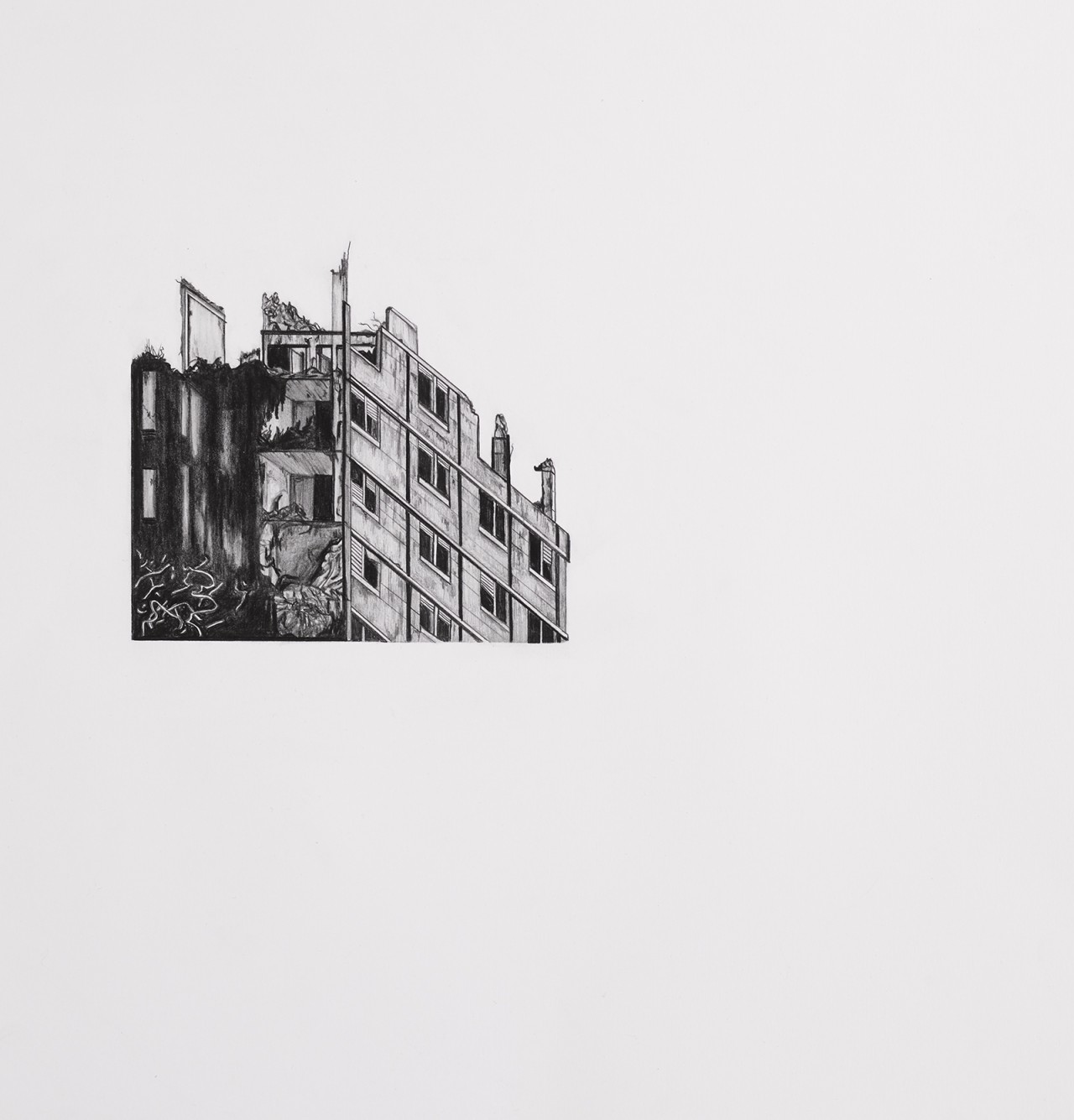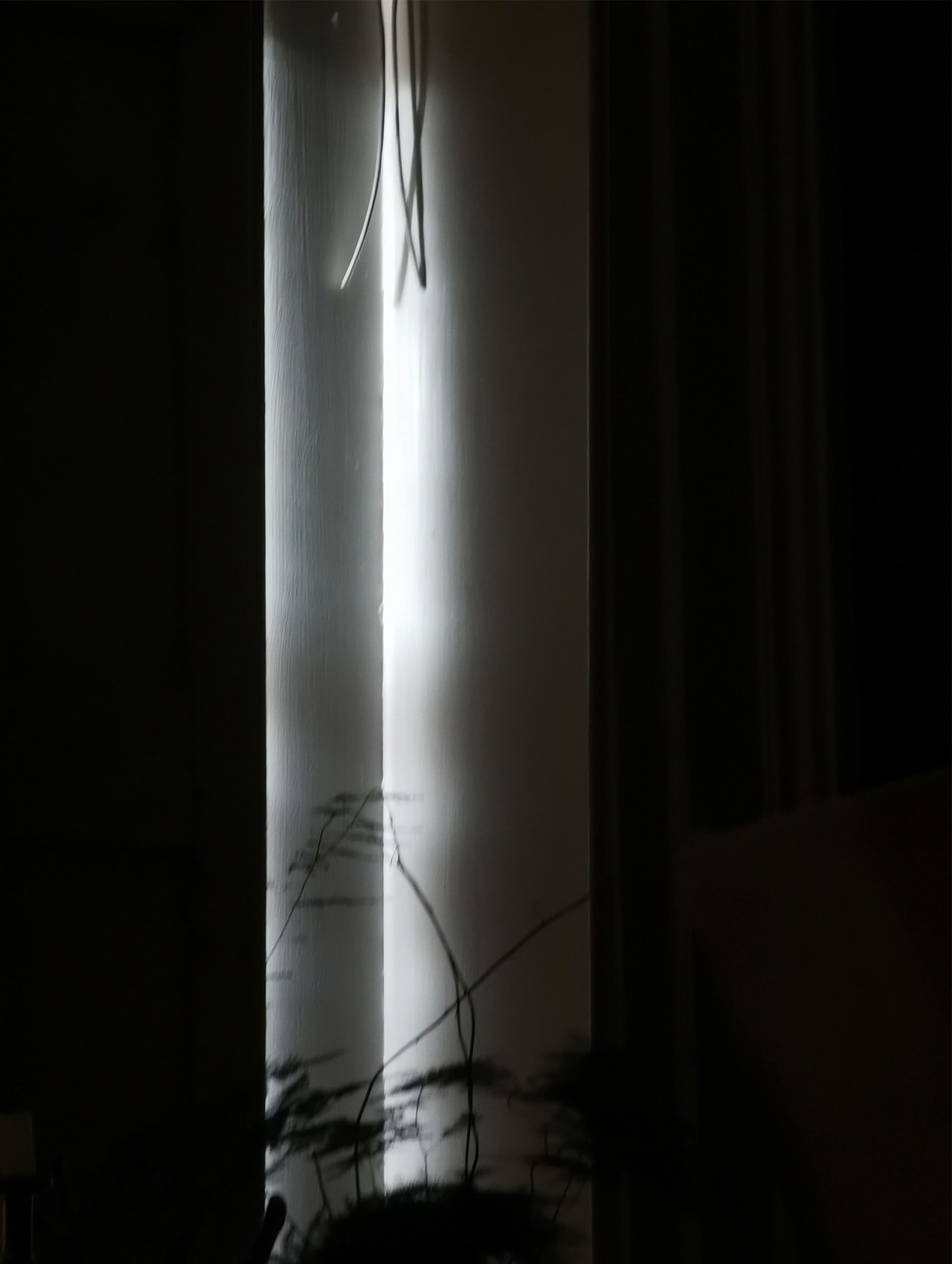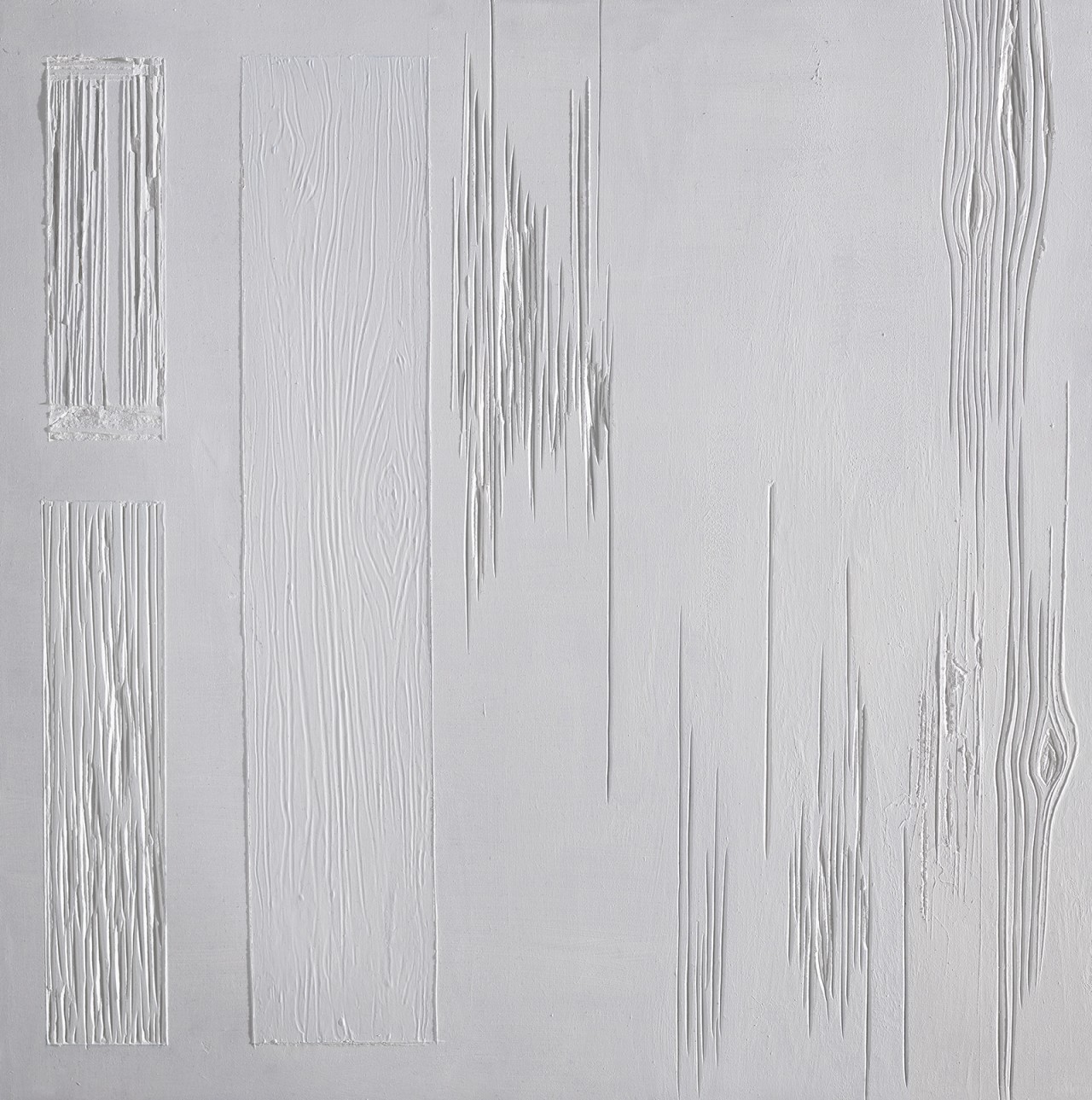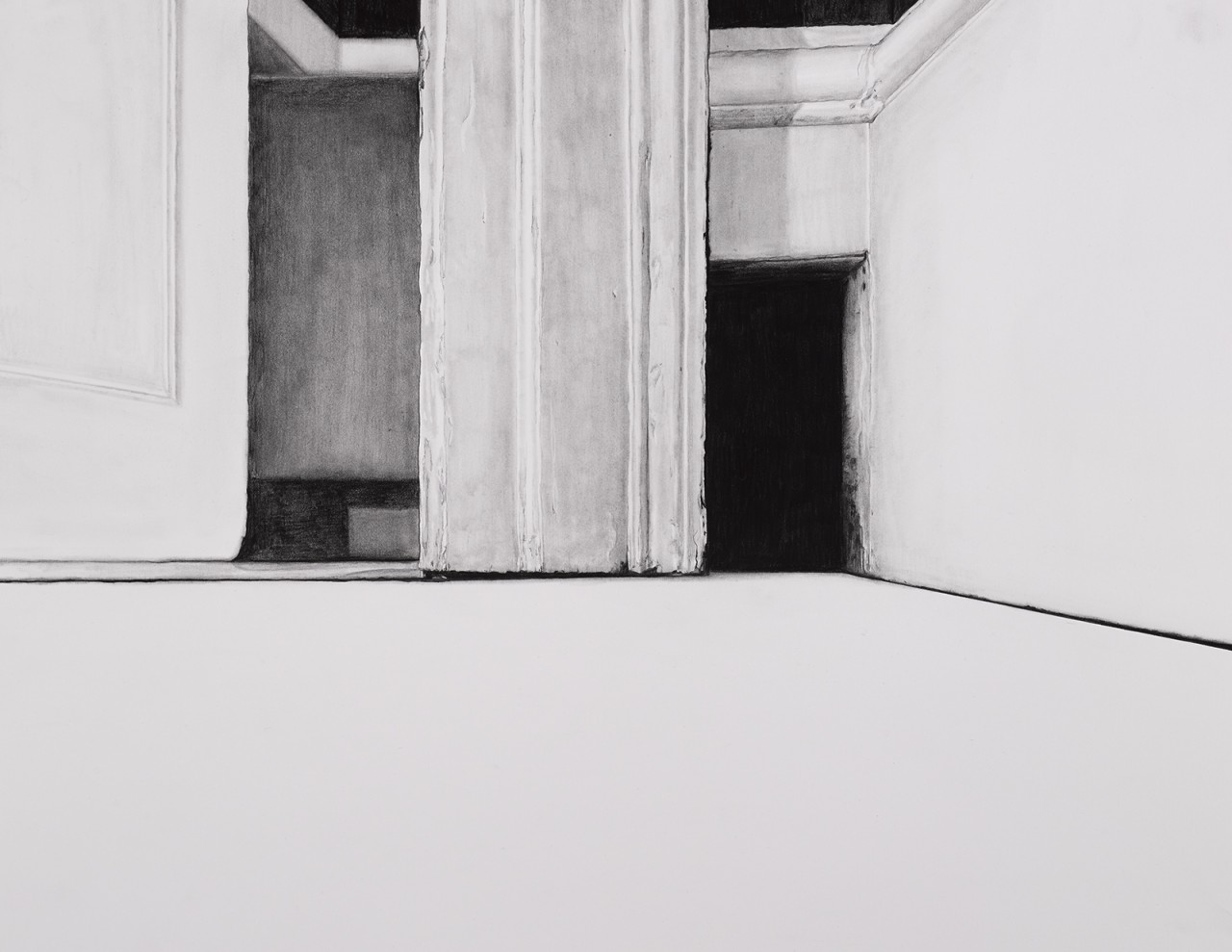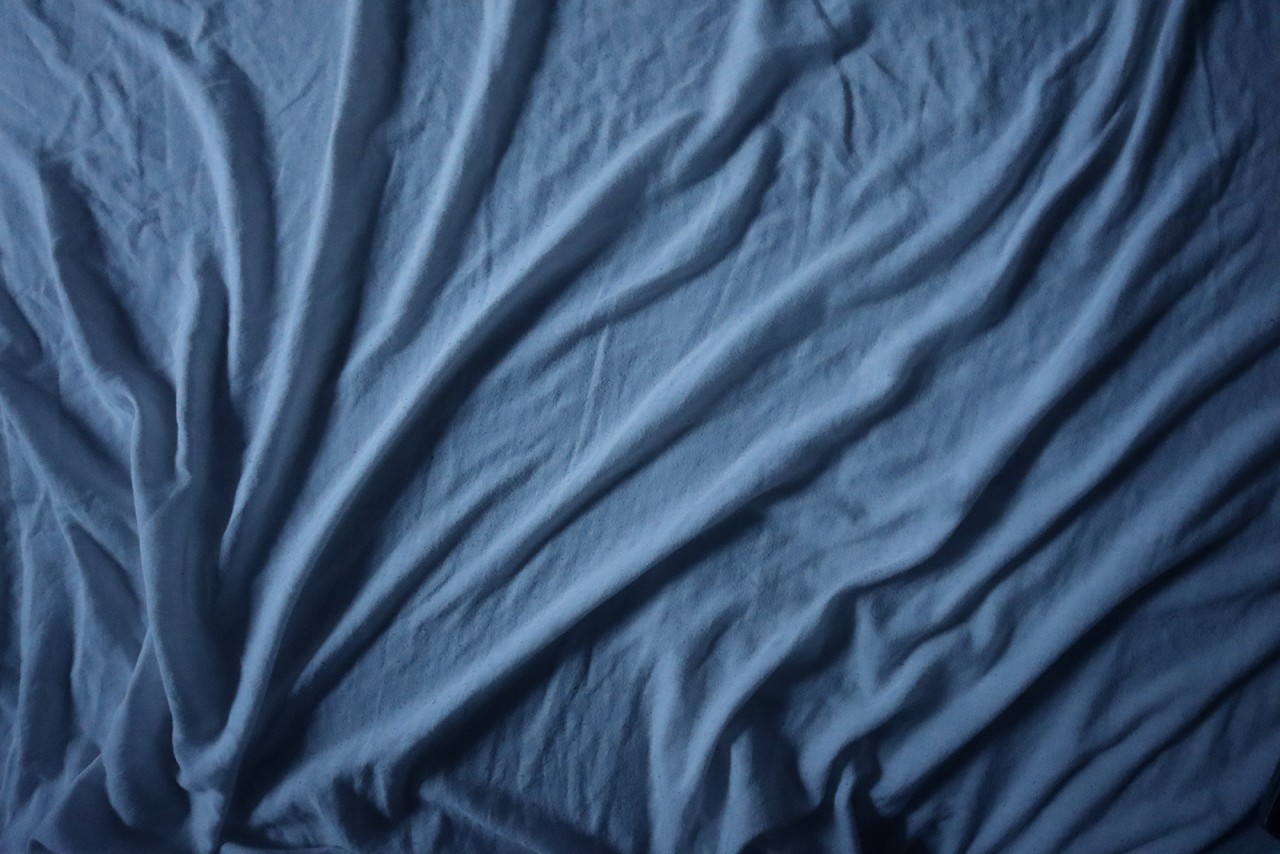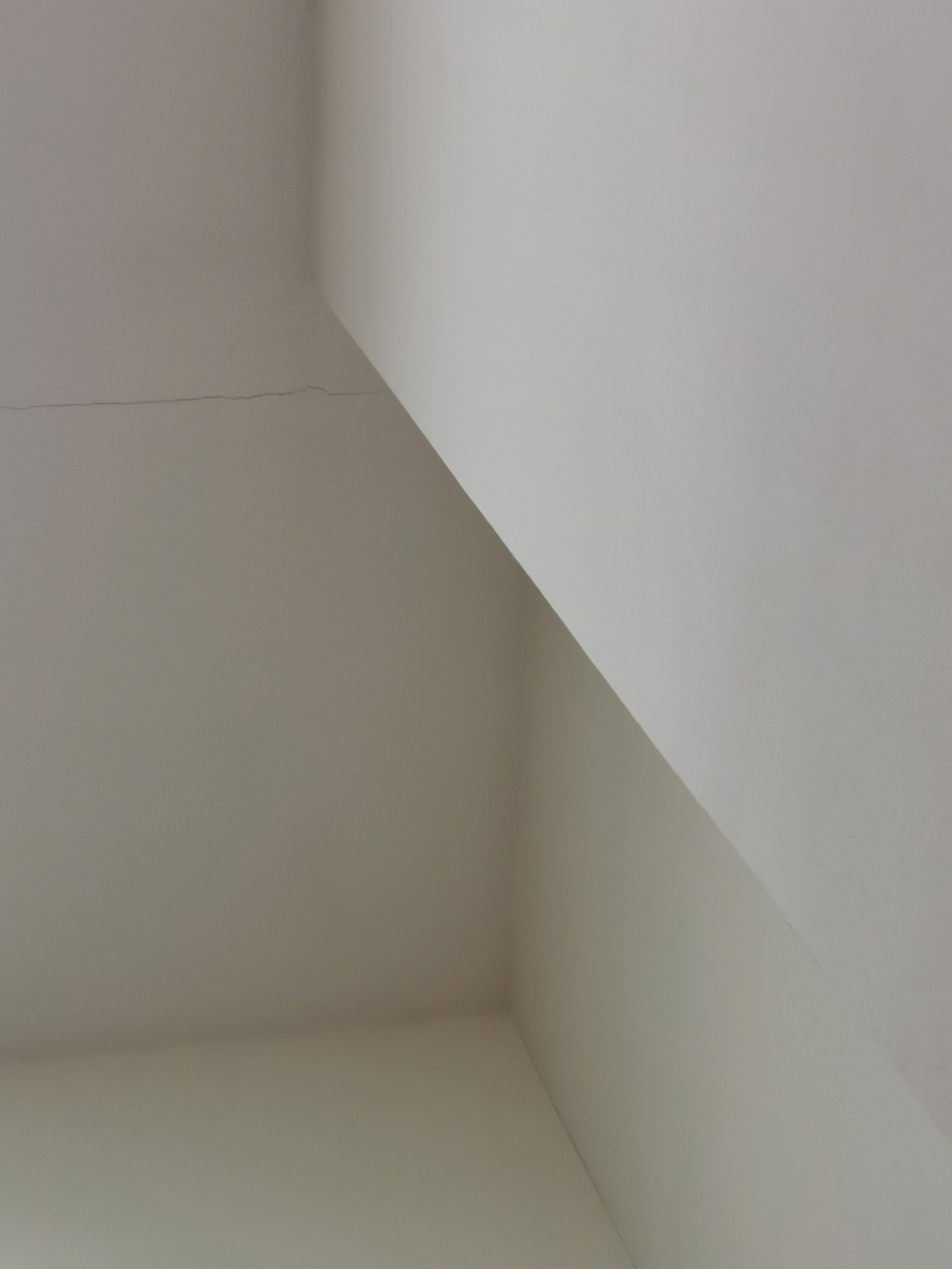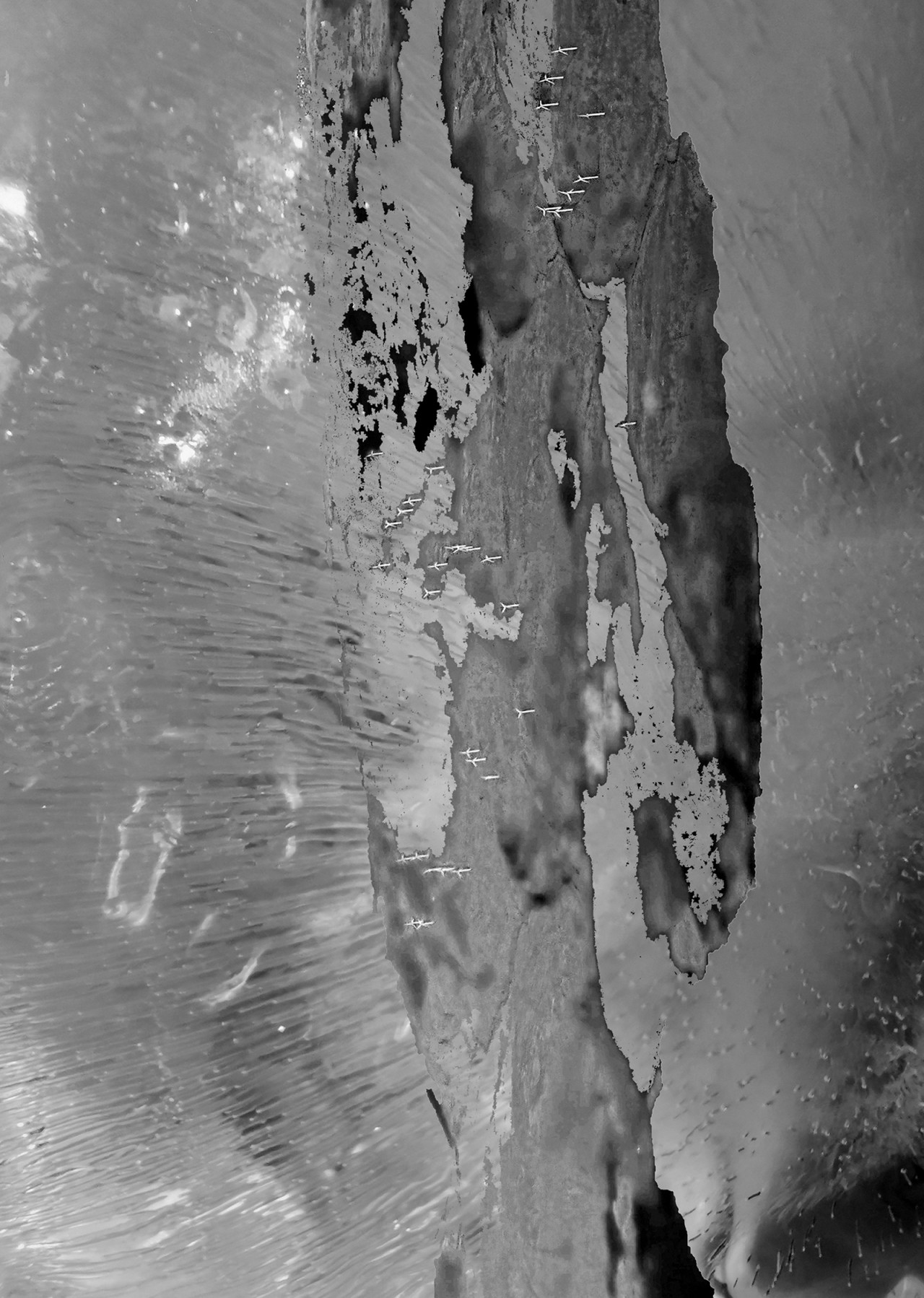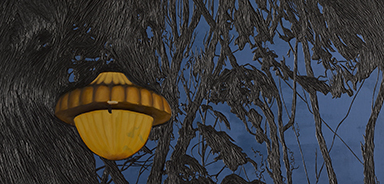Fragments + Fictions
This body of work considers concepts of trace and perception to explore materiality and temporality within architectural space. The relationship between memory and space is examined through the defamiliarization of everyday vestiges of domestic activity and phenomena. The resultant pieces are concerned with the visual poetics of minutiae and forms often overlooked in these places. Ambiguous fragments and fictions are simultaneously documented and produced. These pieces operate between a range of antithetical ideas - interior and exterior, destruction and construction, permanency and ephemerality, the familiar and the unfamiliar.
The work consists of a series of images generated through three main processes – photography, carving, and drawing. The first section of photography documents the detailing of interior worlds, creating abstracted imagery from domestic trace. Sections of crumpled bed linen become mountain ranges, sunlight cast through a rain soaked skylight create dappled ghostly apparitions, a scratched and dented skirting board generates a geometric composition.
The counterpart of these is a series of images of architectural fictions generated from the original images, resulting in fabricated landscapes created through layering and collaging fragments and fractions of various spaces. Both visual forms document, simulate and defamiliarise physical memory through remnants within these spaces, to create abstracted interior and exterior landscapes.
These photographs are accompanied by expanded paintings/carvings on MDF sheets which are removed from their usual function as a construction material. Instead, it undergoes a process of deconstruction through carving and incising to create spurious facsimiles of architectural trace and texture. This process is also applied to heavy weight paper, where domiciliary surfaces’ scuffs and scratches - the forgotten minutiae of physical memory - become scarred white tundras of trace.
Along side these details of constructed space are graphite drawings of household trace both representative and abstracted. These drawings also include depictions of temporary contemporary ruins such as the demolition site of Hawkins House; one of the many scattered across Dublin’s city centre as older buildings and complexes are rapidly replaced by monotonous shining glass blocks. These ruins possess an ephemerality that contrasts to the sanctity and permanence lent to their ancient equivalents.
